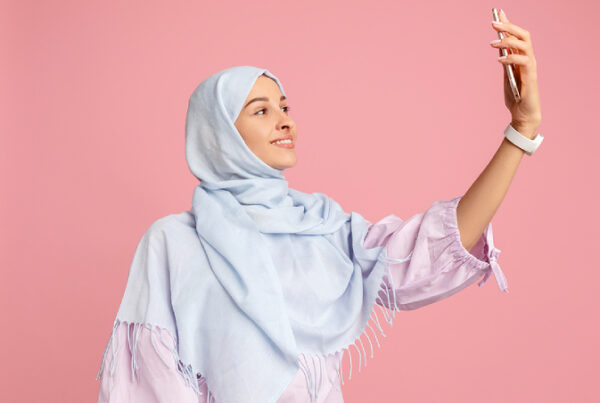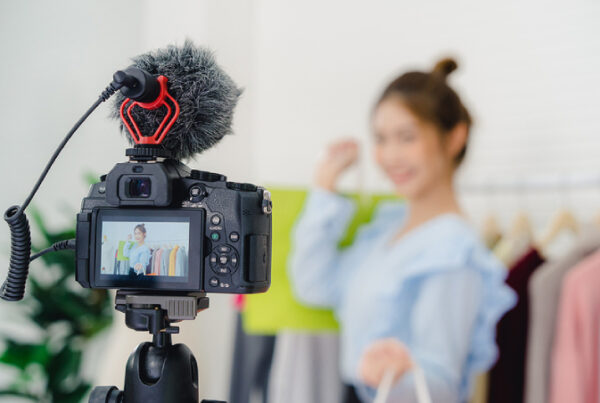How to plan a successful influencer marketing campaign
In the span of a few years, we have seen multiple brands that have adopted influencer marketing into their marketing plan. From the wide audience reach, to the viral marketing achieved with this form of marketing. It makes us wonder, is it really that easy?
Today’s article hopes to serve as a guide for any brand interested in the process of influencer marketing.
While it is not as easy as simply getting anyone to pose with your product on social media, it is also not as complicated as some of you might think it is. Read on to find out how you can go about an influencer marketing campaign to achieve the best results.
How to Create an Influencer Marketing Strategy
Influencer marketing strategy step #1. Goal Setting
source: medium.com
Although most would assume the first step for any influencer marketing would be to contact influencers, that is actually not true.
The foundation of any successful influencer marketing strategy is the brainstorming process behind it. Setting your goals is a step that cannot be missed out. (Although unfortunately many marketers forget about it)
Firstly, goal setting is necessary to determine the influencer marketing strategy chosen. For example, if your goal is brand awareness, the campaign would be more focused on macro influencers (who have a larger reach).
Other common goals you can take into account include audience engagement, branding and sales conversion. To ace influencer marketing campaigns, goal setting is important as it determines the direction a campaign would take.
Furthermore, these goals would help when you are measuring the success of your influencer marketing strategy. For example, if your goal is sales conversion, the traffic directed to your website as a result of a campaign can be measured. (since website clicks are a good indication of purchasing interest).
Therefore, when setting your goals, keep in mind that they should be somewhat measurable and specific.
Influencer marketing strategy step #2. Planning your campaign angle
source: searchenginejournal.com
This is another important step marketers often neglect in their influencer marketing strategies.
However, brainstorming of the content angle is the formula to ace influencer marketing campaigns.
Due to the abundance of influencer marketing campaigns online today, consumers are easily overwhelmed by the products marketed at them. Therefore, an impactful influencer marketing campaign would need to stand out from the typical advertisements on social media.
While there is nothing wrong with getting influencers to just “hold & pose” with a product, the impact of a well thought out campaign would be much more powerful.
Would you buy facial cleanser just because you see an influencer taking a picture with it? The answer would likely be a no. Instead, would you not be more convinced to buy that same product if you saw the before and after using the product pictures on social media?
Influencer marketing strategy step #3. Choosing your influencers
source: mediakix
The next step is to choose the influencers for your influencer marketing campaign. While this step might seem easy, it is more complicated process than it seems.
Try to avoid choosing influencer purely based on their popularity (only choosing those with many followers). Instead, consider various factors such as your brand’s niche, the campaign’s purpose and the fit of the influencer.
Firstly, do proper research about the different categories of influencers and their respective pros and cons. Some common categories include macro, micro nano and celebrity influencers. For more information about the types of influencers, do click here.
A simple introduction would be that macro influencers are known for their wide following while nano/micro influencers are known for their high engagement rates. Therefore, if your campaign’s objective is brand awareness, macro influencers can be tapped into. Likewise, if your objective is to spark conversations to create buzz, micro influencers are a more ideal choice.
After deciding whether you prefer more macro or more micro influencers, you should then look into the fit of influencer in relation to your campaign. For example, fashion brands would most likely look for fashion influencers due to their relevance.
This helps to ensure that the influencer marketing campaigns reaches an audience that would more likely be interested in the postings. (as for the case above, fashion lovers that follow fashion influencers would be attracted to a fashion influencer marketing campaign.)
Influencer marketing strategy step #4. Communicating with chosen influencers
To ace influencer marketing campaigns, effective communication is required. After all influencers are the people that will help spread your brand’s intended message on social media.
Therefore, do discuss your campaign’s objective, direction and goals with the influencers you are working with. This will help ensure the influencer’s content is in line with what your brand is looking out for.
Influencer marketing strategy step #5. Look at your ROIs
source: linqia.com
The final step to ace influencer marketing campaigns would be to measure your campaign’s results. This step will not only help in the measurement of ROIs. It will also act as a guide as to how your future campaigns can be improved.
There are several indicators you can use to measure the success of a campaign — mainly its reach, engagement, number of clicks.
You should refer back to the goals you set (as well as influencer marketing metrics) to help you determine whether or not you’ve achieved your objectives.
Firstly, reach refers to the number of people that have seen the postings from an influencer marketing campaign. A campaign with a high reach would indicate that it has been successful in building brand/ product awareness. (since more users have seen the campaign postings)
Secondly, engagement refers to the total number of likes, comments and shares on a post. Since these actions require users to ‘actively interact’ with the postings, engagement is a good indication of the level of interest sparked as a result of an influencer campaign.
Lastly, clicks refer to the number of people that have followed up on the influencer’s posting by clicking on an attached link. (that directs them to the brand’s website, an interest form etc) They are a good indicator of how successful a campaign has been in immediate sales conversion.
Conclusion
In a nutshell, influencer marketing can be a highly rewarding form of marketing. After all, there are more than a billion active users on social media!
Sources
Blog.hubspot.com, how-to-work-with-influencers (ace influencer marketing campaigns)






